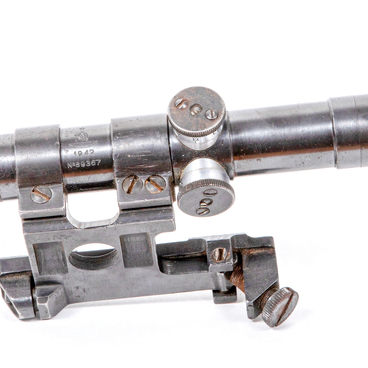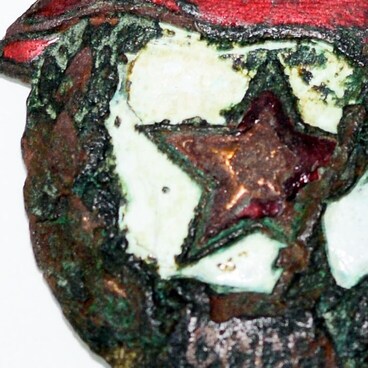During military engagements, promptly transmitted information could determine the outcome of an operation. The German military used signal pistols and flare guns to produce different distress signals. The most common was the Leuchtpistole, or the Leu.P-28 pistol, by the German firearm manufacturer Walther, adopted by the Reichswehr in 1928.
The pistol had a smoothbore hinged barrel. Below the breechblock, a lever was located in front of the trigger guard. The cartridge was locked in the chamber by a special wedge, which could be controlled with the lever above the grip. The main parts of the signal pistol — the frame and the barrel — were made of steel.
To fire the Leu.P-28, 18 types of 26 mm flare, signal, smoke, and sound cartridges were used. Each cartridge had an aluminum case, which was marked with the branding of the manufacturer, the city, the manufacturing date, the expiration date, and the cartridge type. Sometimes the full name of the manufacturer or the city was replaced with a 3-4 letter abbreviation.
Each cartridge had a small amount of paint in it, the color of which indicated what exactly was needed at the moment. Thus, the white signal indicated the front line, the red signal ordered barrage fire, and the green signal ordered its suspension. The smoke cartridge signaled the approach of enemy tanks, and the sound cartridge meant the beginning of a gas attack.
The signal cartridges were marked with the corresponding color at the bottom of the case and along the rim on the side of the cartridge. The multi-star signal cartridges were marked with stars or dots, the sound cartridges were marked with a blue ring, and the parachute cartridges, which were used for measuring the strength and direction of the wind, were completely white and smooth. The cartridges also differed in the shape of the bottom and the rim. They could be smooth, half-notched, or fully notched.
The flare cartridges were activated at an altitude of 25 m, the maximum flight height was 80 m, and the duration of the burning was 6 to 15 seconds. In daytime in good weather conditions, a flare cartridge could be seen at a distance of up to 2.5 km. At nighttime, a flare could illuminate an area with a radius of at least 100 m.
The pistol had a smoothbore hinged barrel. Below the breechblock, a lever was located in front of the trigger guard. The cartridge was locked in the chamber by a special wedge, which could be controlled with the lever above the grip. The main parts of the signal pistol — the frame and the barrel — were made of steel.
To fire the Leu.P-28, 18 types of 26 mm flare, signal, smoke, and sound cartridges were used. Each cartridge had an aluminum case, which was marked with the branding of the manufacturer, the city, the manufacturing date, the expiration date, and the cartridge type. Sometimes the full name of the manufacturer or the city was replaced with a 3-4 letter abbreviation.
Each cartridge had a small amount of paint in it, the color of which indicated what exactly was needed at the moment. Thus, the white signal indicated the front line, the red signal ordered barrage fire, and the green signal ordered its suspension. The smoke cartridge signaled the approach of enemy tanks, and the sound cartridge meant the beginning of a gas attack.
The signal cartridges were marked with the corresponding color at the bottom of the case and along the rim on the side of the cartridge. The multi-star signal cartridges were marked with stars or dots, the sound cartridges were marked with a blue ring, and the parachute cartridges, which were used for measuring the strength and direction of the wind, were completely white and smooth. The cartridges also differed in the shape of the bottom and the rim. They could be smooth, half-notched, or fully notched.
The flare cartridges were activated at an altitude of 25 m, the maximum flight height was 80 m, and the duration of the burning was 6 to 15 seconds. In daytime in good weather conditions, a flare cartridge could be seen at a distance of up to 2.5 km. At nighttime, a flare could illuminate an area with a radius of at least 100 m.



